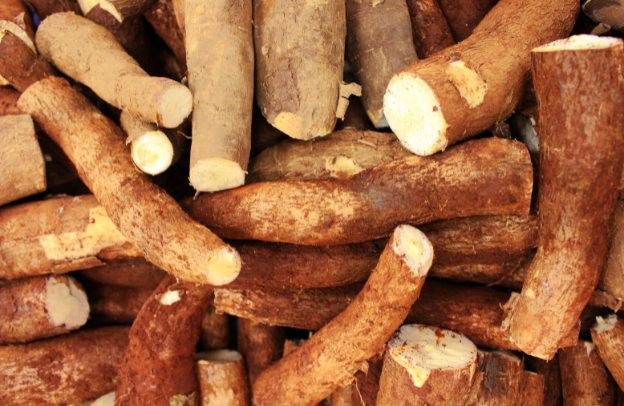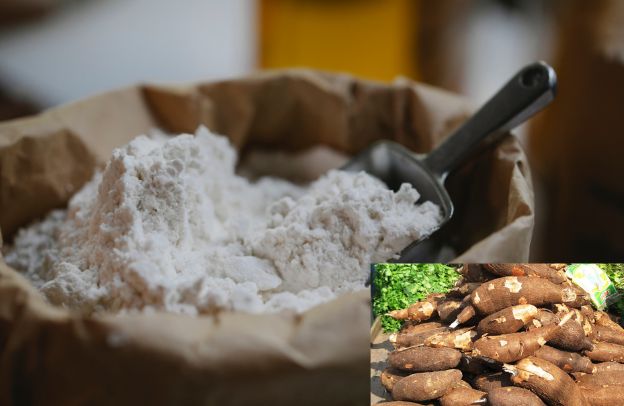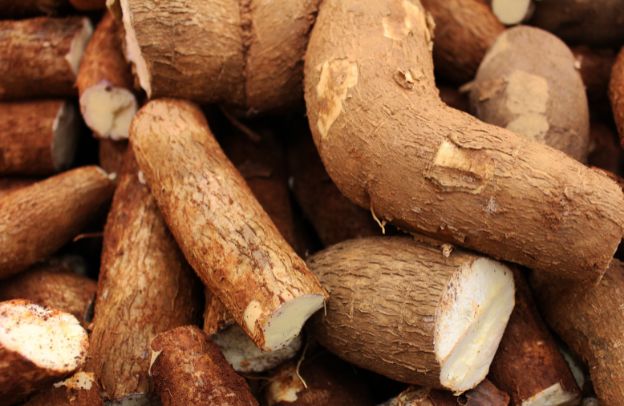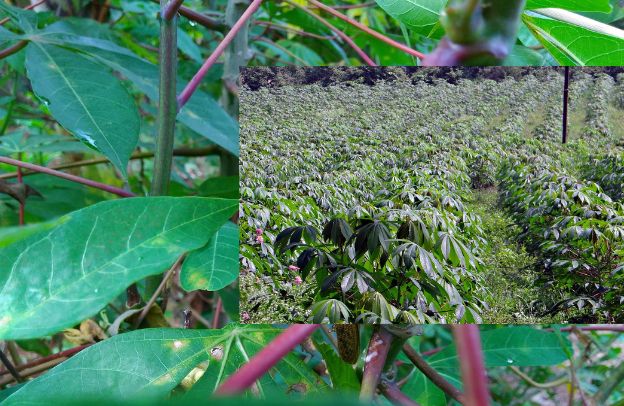Cassava As A Gluten-Free Alternative: How To Use It In Baking

Have you ever considered that a humble root crop could transform your baking, health, and even business prospects? In a world where gluten intolerance is on the rise and demand for alternative flour is skyrocketing, cassava is emerging as a game changer. But cassava is more than just a gluten-free alternative, it’s a billion-dollar industry waiting to be tapped, particularly in Africa, where it thrives abundantly.
Learn How to Leverage Your Story through our Story To Asset Transformation (S.A.T) Framework.
For African diaspora entrepreneurs looking to invest in agribusiness or create innovative food products, cassava offers a rare combination of affordability, accessibility, and nutritional value.
So, how can you harness its potential? How does cassava stack up against traditional flours? And most importantly, how can you incorporate it into baking without compromising taste and texture? Let’s explore.
See also: The 5 Healthy Benefits Of Cassava Consumption
The Rise of Gluten-Free Diets and Cassava’s Role
Over the last decade, gluten-free diets have surged in popularity. Whether due to celiac disease, gluten sensitivity, or a general preference for digestive wellness, millions are ditching wheat-based products. According to the Celiac Disease Foundation, about 1% of the global population has celiac disease, while many others experience gluten sensitivity.
Cassava flour provides an excellent alternative because it mimics wheat flour’s texture while remaining naturally gluten-free. Unlike other substitutes like almond or coconut flour, cassava flour is neutral in taste, making it a versatile option for bread, pastries, and thickening sauces.
For African diaspora entrepreneurs, this growing market represents an opportunity to develop gluten-free products sourced from Africa’s abundant cassava supply.
Nigeria alone, according to the Food and Agriculture Organization, (FAO) produces over 60 million metric tons of cassava annually, making it the world’s largest producer.
Nutritional Value of Cassava
Before incorporating cassava into your diet, it’s important to understand its nutritional profile.
Cassava is primarily a carbohydrate source, making it a great energy booster. However, its nutritional content varies based on processing methods. Below are some key nutrients found in cassava flour:
- Carbohydrates: About 78–80% of cassava flour is carbohydrates, providing a steady energy source (United States Department of Agriculture, 2023).
- Fiber: It contains dietary fiber, aiding digestion and promoting gut health.
- Vitamin C: Essential for immune support, cassava provides roughly 20% of the recommended daily intake per serving.
- Folate & Iron: Beneficial for pregnant women and individuals at risk of anemia.
- Resistant Starch: Cassava flour contains resistant starch, which supports blood sugar regulation and gut health (National Institute of Health, 2022).
While cassava is nutrient-rich, it’s important to process it properly to remove naturally occurring cyanogenic glycosides, which can be toxic if consumed in excess. Traditional soaking, fermenting, or drying methods neutralize these compounds, making cassava flour safe for consumption.
See also: Cassava Flour: Nigeria’s Hidden Gem in the Surge for Gluten-Free Alternatives
The Business Potential of Cassava Flour in the African Diaspora Market
With the global gluten-free products market expected to reach $9.99 billion by 2028 (Fortune Business Insights, 2023), cassava flour is more than just a kitchen ingredient, it’s a lucrative investment. African diaspora entrepreneurs can tap into this demand by:
- Exporting Cassava Flour-Based Products: African-sourced gluten-free flours can penetrate international markets.
- Launching Cassava-Based Bakeries: Offering gluten-free baked goods to niche health-conscious consumers.
- Partnering with Restaurants and Cafés: Supplying gluten-free alternatives to mainstream food businesses.
- Developing Cassava Flour Mixes: Creating pre-packaged flour blends for easy home baking.
With African agribusiness projected to reach $1 trillion by 2030, according to the World Bank, cassava flour presents a promising opportunity for diaspora entrepreneurs to support job creation, food security, and economic development across the continent. At the Africa
Investment Forum, where project sponsors, borrowers, lenders, and investors convened to explore investment opportunities, leaders from top agribusiness companies discussed the industry’s bright future.
Africa’s agribusiness sector, with its immense agricultural potential, is poised to become the “new oil,” driving inclusive growth across the continent.
“Agriculture is a key priority for the African Development Bank through our Feed Africa strategy,” said Jennifer Blanke, Vice President for Agriculture, Human, and Social Development at the African Development Bank. “By transforming Africa’s agricultural sector, we will create an engine for economic growth, generating higher income, better jobs, and improved nutrition,” she emphasized during the Africa Investment Forum’s session on agribusiness investment.
How to Use Cassava Flour in Baking
Unlike wheat flour, cassava flour lacks gluten, which means it behaves differently in baking. However, when used correctly, it produces soft, fluffy, and delicious baked goods.
- Understanding Cassava Flour’s Properties: Cassava flour has a light texture, neutral taste, and high water absorption rate. This means you often need to adjust recipes to prevent dryness.
- Cassava Flour as a Wheat Substitute: Cassava flour can replace wheat flour at a 1:1 ratio in most recipes. However, for bread and cakes requiring elasticity, you may need to combine it with starches or binding agents like xanthan gum.
Challenges of Baking with Cassava Flour and How to Overcome Them
Like any gluten-free flour, cassava flour has its challenges. Here’s how to troubleshoot them:
| Challenge | Solution |
| Absorbs too much liquid | Reduce flour quantity slightly or increase liquid ingredients |
| Lacks elasticity | Add xanthan gum, psyllium husk, or eggs for better structure |
| Has a slightly earthy taste | Combine with coconut flour or almond flour to balance the flavor |
| Denser texture than wheat | Sift flour before use and mix with lighter starches like tapioca |
See also: The Economic Benefits Of Cassava Cultivation In Nigeria
Recipes and Tips for Baking with Cassava Flour
To help you get started, here are some beginner-friendly cassava flour recipes.
1. Gluten-free cassava Flour Pancakes
Ingredients:
- 1 cup cassava flour
- 2 eggs
- 1 cup milk (or dairy-free alternative)
- 1 tbsp honey or maple syrup
- 1 tsp baking powder
- ½ tsp salt
Instructions:
- Whisk eggs, milk, and honey together.
- Gradually add cassava flour, baking powder, and salt.
- Mix until smooth, then cook on a preheated skillet for 2–3 minutes per side.
2. Cassava Flour Banana Bread
Ingredients:
- 1½ cups cassava flour
- 3 ripe bananas, mashed
- 2 eggs
- ½ cup coconut oil or butter
- ½ cup honey or sugar
- 1 tsp baking soda
- ½ tsp cinnamon
Instructions:
- Preheat the oven to 350°F (175°C).
- Combine wet ingredients and mashed bananas.
- Mix dry ingredients separately, then blend with the wet mixture.
- Pour batter into a greased loaf pan and bake for 45–50 minutes.
3. Cassava Flour Chocolate Chip Cookies
Ingredients:
- 1½ cups cassava flour
- ½ cup butter or coconut oil
- ½ cup brown sugar
- 1 egg
- ½ tsp baking soda
- ½ cup chocolate chips
Instructions:
- Cream butter and sugar together.
- Add egg and mix.
- Stir in cassava flour and baking soda, then fold in chocolate chips.
- Bake at 350°F (175°C) for 12–15 minutes.
See also: Cassava Processing What Are The Techniques And Methods
Final Thoughts: The Future of Cassava Flour in the Gluten-Free Industry
Cassava flour is more than just a gluten-free alternative, it’s an economic asset, a health-conscious choice, and a cultural bridge between Africa and the global market. For African diaspora entrepreneurs, investing in cassava-based businesses presents a unique opportunity to support sustainable agriculture, reduce food insecurity, and meet growing consumer demand.
As global food trends continue to evolve, cassava’s role in gluten-free baking will only expand. Whether you’re a home baker, a food entrepreneur, or an investor, cassava flour offers a world of possibilities one delicious recipe at a time.
By leveraging Nigeria’s status as the world’s leading cassava producer, African diaspora investors can build profitable ventures that not only serve dietary needs but also create jobs and strengthen the continent’s agribusiness sector.
Now, the real question is how will you use cassava to revolutionize your baking and business.
Learn How to Leverage Your Story through our Story To Asset Transformation (S.A.T) Framework






